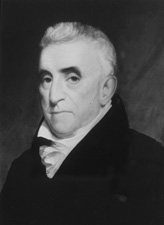A Look at Boston’s Lost and Found
 Last month at the African American Intellectual History blog, Jared Hardesty wrote about a surviving scrap of colonial Boston town records and what they reveal about the town’s black population.
Last month at the African American Intellectual History blog, Jared Hardesty wrote about a surviving scrap of colonial Boston town records and what they reveal about the town’s black population.
The story starts in the Boston Public Library’s Rare Books and Manuscripts room:
Pasted onto the pages of the nineteenth-century bound volume were eighteenth-century town crier documents kept by Arthur Hill. Hill’s records consist of lists of goods lost and found, or “taken up,” by Boston’s residents between 1736 and 1748. . . .Hardesty is the author of the new book Unfreedom: Slavery and Dependence in Eighteenth-Century Boston.
Hill made fairly meticulous notes as to who found what goods. He recorded occupation and relationships. He also recorded race, often using the term “Negro” to describe people of African descent who took up lost items. Under that or related terminology (“Negro Fellow,” etc.), Hill recorded 36 items found by black Bostonians. That would mean they found 9.8% of the total items recovered, similar to Boston’s black population during this time period, which was roughly 10-12% of the total population. . . .
A wide range of goods appear throughout the records, but one category stands out. Of the 368 total items reported, 87 or 23.6% related to maritime activities and included naval stores, ship pieces, and, the largest in this category, small watercraft such as canoes. This trend should not come as a surprise as Boston was a bustling port city with a daily flurry of maritime activity. Other goods reported in large numbers were bulk amounts of cloth, hand tools, and livestock.
What is interesting, however, is that in the records concerning black men and women do not reflect the larger record. Only one, “Martha Grover’s Negro” found a small boat. Another found a handsaw. All of the others either found consumer goods such as gold buttons, jewelry, pocket books, and clothing items, or cash. . . .
Take for example “Joseph Williams Negro” who found “One Gold Ring” in June 1738. Did he report his find because he was attempting to be a good community member? Perhaps. Yet, we also have to consider he told Hill about the ring because, as an enslaved black man, owning a piece of gold jewelry would have brought suspicion about where and how he acquired it, forcing him to go to Hill to protect himself and his reputation.













